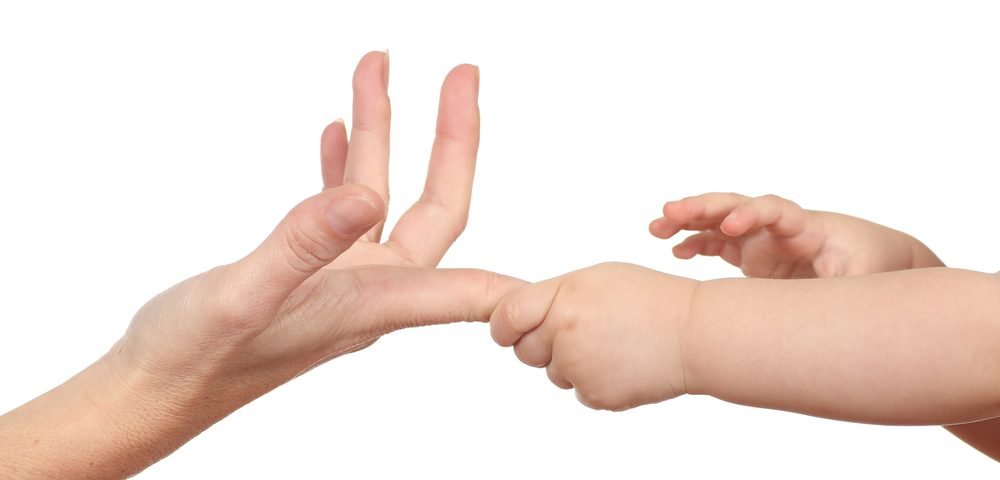Meeting Austen’s Baby Doll, Sarah
Written by |

My parents have always been doting grandparents. Since my oldest daughter was born 12 years ago, it has felt like Target’s toy department exploded in my home. Almost anything my kids have wanted, they have gotten — within reason, of course.
Addi was 2 when she got her first Bitty Baby doll, a relic from my childhood that my mom simply could not wait to pass down. Two was a good age. Addi loved dolls, and although a bit expensive, this particular brand holds up well to toddler chaos. I figure it makes my parents happy to give to my children, and if it’s not an insane gift, I will not get in the way.
That’s why I didn’t bat an eye when Austen received her look-alike Bitty Baby on her second Christmas. She wasn’t 2 yet, but I thought it would be a great toy for her. Except, she ignored it like she did many toys at that time. In fact, she only had two sets of toys she was interested in playing with at all. I later learned this is pretty typical in children on the autism spectrum.
Because her Bitty Baby was not Play-Doh- or Peppa Pig-related, Austen simply ignored it. The doll stayed in her room, and every once in a while I encouraged her to play with it. But she simply wasn’t interested. She might have played with the doll five times in two years.
Then Austen started preschool, and one of her goals was to play with new toys as well as other children. I didn’t have much hope in the former goal, but her teacher assured me we could make progress.
Lo and behold, he was right. Within weeks, Austen was playing with toys besides Peppa Pig and Play-Doh. Those were still her favorites, but she could leave them for a short period of time to play with blocks or her play kitchen.
Eventually, she started wanting to play with her doll, too. I was so excited. She held her baby and cuddled her. She often asked her sister to help her put her oxygen mask on her baby because she wanted her baby to be just like her.
Still, with all the progress Austen was making, one thing seemed off to me. Yes, Austen was finally playing with her baby dolls and stuffed animals, but she wasn’t naming them. When I asked Austen what her baby’s name was, she simply said “baby.” Likewise, her stuffed giraffe was simply “giraffe” and her unicorn was “unicorn.” I was not sure if this was an autistic trait, but both of her siblings had named their toys very early on. This summer, Austen still had not.
I didn’t push. I was just happy we were making progress. If the baby stayed “baby” forever, I had made up my mind to be OK with it. Austen could at least remember names if told, and had finally started calling her brother “Atlas” instead of simply “brudder” at about 4 and a half years old.
Then, like many progressions in Austen’s life, something just clicked. Last weekend, we were all bundled in Austen’s bed for story time, and she started crying for her baby. Addi, out of habit, asked Austen what her baby’s name was.
Instead of saying “baby,” Austen said, “I don’t know.” She cried a little, then asked if Addi could help her. So, we paused our story and Addi tossed out names. Austen settled on the name Sarah and went to bed that night cuddled up with Sarah in her arms.
I have to admit I wasn’t sure if this whole “Sarah” thing would stick. I was pretty sure that, the next morning, Sarah would go back to being “baby.” But she didn’t. Austen woke up and asked me to help her find Sarah’s bottle, and then climbed into bed with her daddy and introduced him to “my baby Sarah.”
The idea of naming a baby doll may seem pretty basic to some. Others may think I’m crazy for even worrying about it at all. But you never realize how much normalcy you take for granted with your children until you don’t have it. Austen hasn’t named any other toys yet. Her giraffe is still “giraffe,” and maybe it will stay that way forever.
But Sarah gave me a glimpse of hope that each day can bring new things for Austen. And nothing is definite, good or bad. Autism and Dravet syndrome are not limits — only obstacles for her to overcome.
***
Note: Dravet Syndrome News is strictly a news and information website about the disease. It does not provide medical advice, diagnosis, or treatment. This content is not intended to be a substitute for professional medical advice, diagnosis, or treatment. Always seek the advice of your physician or other qualified health provider with any questions you may have regarding a medical condition. Never disregard professional medical advice or delay in seeking it because of something you have read on this website. The opinions expressed in this column are not those of Dravet Syndrome News or its parent company, Bionews, and are intended to spark discussion about issues pertaining to Dravet syndrome.






Leave a comment
Fill in the required fields to post. Your email address will not be published.